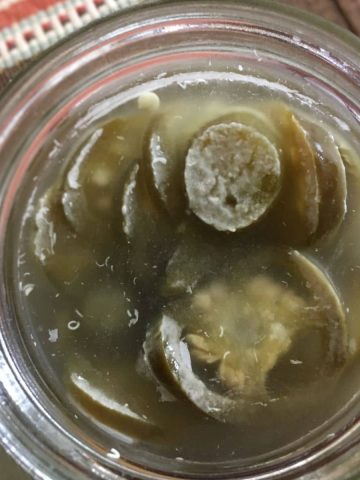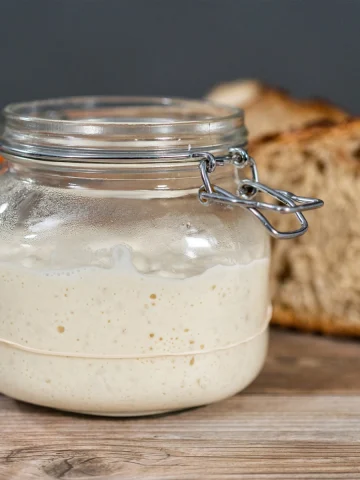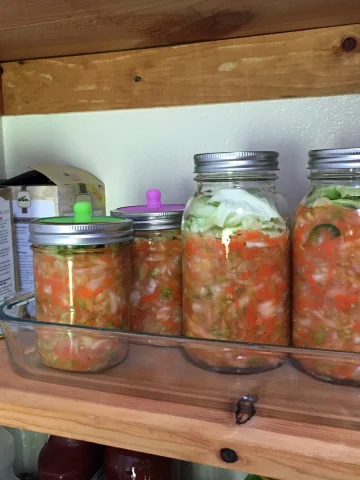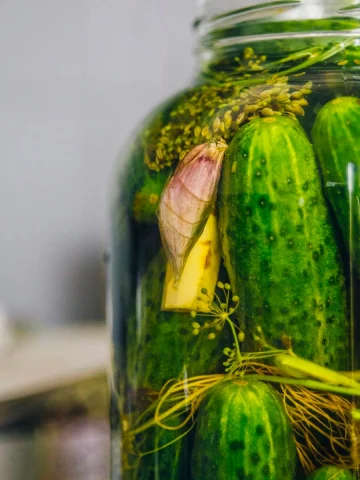Cold crashing is the process of quickly reducing the temperature of homebrewed mead, wine, or beer before stabilizing, secondary fermentation, or bottling.
All you need to do to cold crash your homebrew mead is chill it down to as close to 33° Fahrenheit as quickly as possible.
Place a carboy or a fermenting vessel in a fridge or a temperature-controlled freezer for several days. The ideal temperature should be between 33-40°F (.5-4.4°C).
Why Cold Crash Mead?
Cold crashing is a technique brewers use to make their mead clear or halt fermentation. There's some science behind it, but the general idea is that it helps the yeast to flocculate more easily.
The two main reasons for cold crashing mead are clearing the drink or stopping fermentation.
Flocculate means all the yeast particles cluster together and fall out of suspension to the bottom of the vessel, producing a clearer mead. Cold crashing mead makes it crystal clear and gives it a more refined look.
Cold crashing does not affect the taste of the finished product.
Cold crashing is done by dropping the temperature of the mead to almost freezing temperatures after primary fermentation. This does not prevent secondary fermentation.
Related Topic: How long does mead take to ferment?
Sometimes, yeast can remain suspended in your mead and create a hazy product or unrefined and undesirable taste. Cold crashing mead can help with this, but it's also important to note that this does not inhibit further yeast growth.
To properly halt fermentation, you'll need some potassium sorbate or potassium metabisulfite. Check out my post on Campden tablets to learn about potassium sorbate or potassium metabisulfite.
When should you cold crash mead?
At what point should you crash your mead? When is the best time during the production process to cold crash?
You cold crash after primary fermentation. The mead must be fully fermented.
To cold crash mead, you must finish primary fermentation and let the mead reach its final gravity.
Take a reading with a hydrometer every day for three days straight. If there is no movement, then fermentation is complete.
Another option is to do two readings. The first on day one and then another seven days later. If there is no movement, the fermentation is done.
After this, it is safe to start cold crashing.
The yeast will stop growing when they get too cold and will sink to the bottom of the container.
Cold crashing does not kill the yeast. If the yeast reaches warmer temperatures, fermentation will resume.
After cold crashing, you should move your mead to a second container while taking extra care not to disturb any yeast at the bottom of the first container.
The best way to transfer the mead over is by siphoning it from the primary fermenter to your new container–either a sanitized bucket or a secondary fermenter.
If you decide to go through with secondary fermentation for your mead, you may want to hold off on cold crashing until after that. Or, you'll have to do it twice. Cold crashing twice won't hurt your mead.
Does cold crashing kill yeast?
Does cold crashing prevent the yeast from fermenting the mead? How do you know the yeast to stop?
Cold crashing mead does not kill the yeast. Cold crashing stops the yeast from fermenting for some time while it is still cold.
How to cold crash mead? Step-by-step instructions
Cold crashing is a great way to get a cleaner mead and is perfect for stubborn, non-flocculant yeast strains. How exactly do you cold crash, though? Well, it's very easy and doesn't involve real crashing of anything–unless you drop the container.
Here are the step-by-step instructions for the cold crashing process:
1. Let your mead finish fermenting
The first thing you need to do is let your mead finish fermenting. Depending on the yeast strain used, this could take anywhere from one to three weeks. To be sure your yeast is done fermenting, use a hydrometer or refractor to check for stable gravity readings over one week.
2. Place your fermentation container somewhere cold
Once your mead has finished fermentation, place the fermentation vessel or glass carboy (mead still inside) in the fridge or a temperature-controlled freezer just above freezing temperature. The ideal temperature should be between 33-40°F (.555-4.4°C).
Let it sit in the refrigerator for 3 - 6 days. If the mead is not clearing, keeping it in the fridge for a couple of weeks is acceptable.
The longer you wait, the more sediment will fall out and settle on the bottom. This will cause the yeast to stop fermenting, flocculate, and fall to the bottom of the fermenter, leaving you with a clear mead and a cake of yeast at the bottom of the vessel.
Last update on 2025-05-18 / Affiliate links / Images from Amazon Product Advertising API
3. Move your mead to a new container
Once the yeast has fallen to the bottom, move your mead to a new container by carefully pouring it or using an auto siphon. A siphon is the best method, as it's less likely to disturb the yeast and kickstart another fermentation process.
At this time, either wait for the mead to finish stabilizing or move to the bottling process.
What is the next step after cold-crashing mead?
Once a cold crashed mead looks clear, you have several choices.
Rack and stabilize the mead, then complete secondary fermentation.
Bottle it and keep it cold. Do not store it at room temperature in a sealed bottle because fermentation can start again and cause the bottles to explode.
Is cold crashing necessary or a required step to make mead?
Cold crashing is not a required step in making mead. Don't bother with cold crashing if the mead cleared out on its own during primary fermentation.
Fining Agents for Clearing Mead
Using a fining agent is an alternative to cold crashing mead. Fining agents are additives that can be added to your brew to help the yeast particles within them to drop.
If you don't have extra space or time to wait for a mead to crash fully, a fining agent is a great alternative to clear a mead. Some options include Bentonite, Sparkalloid, Isinglass, and Pectinase. (amazon link)
Last update on 2025-05-19 / Affiliate links / Images from Amazon Product Advertising API
Did I answer all your questions about cold crashing mead: what is cold crashing, when, why, and how do you do it?
Cold crashing is the idea of putting mead into a fridge or moving it to just-above-freezing temperatures to clear the mead or halt fermentation.
Cold crash mead to make it clear and remove pesky, non-flocculant yeast strains that might change the taste of the mead. Cold crashing results in better tasting and refined mead. Start your cold crash after fermentation.
Remember: cold crashing mead does not kill the yeast.
To cold crash, let your mead finish fermentation, place the container in the fridge or somewhere with almost freezing temperatures, and then carefully move the mead to a new container by pouring it or siphoning it.








